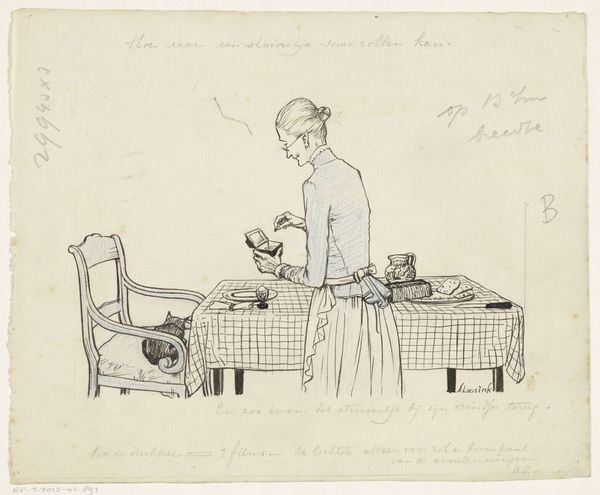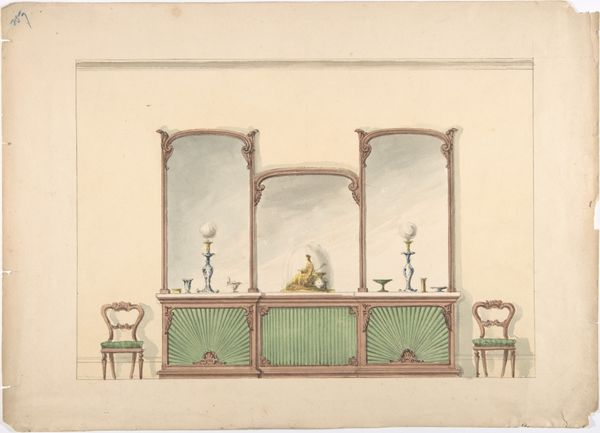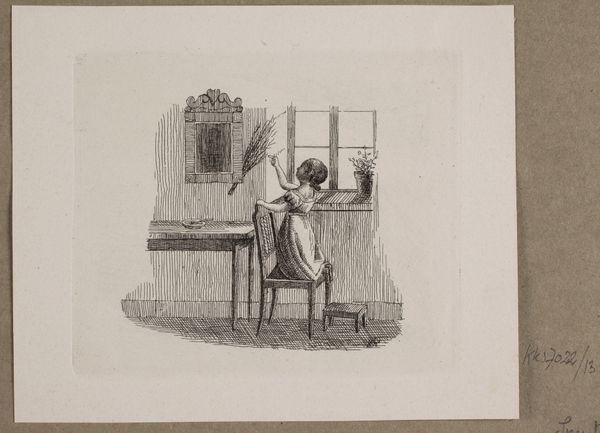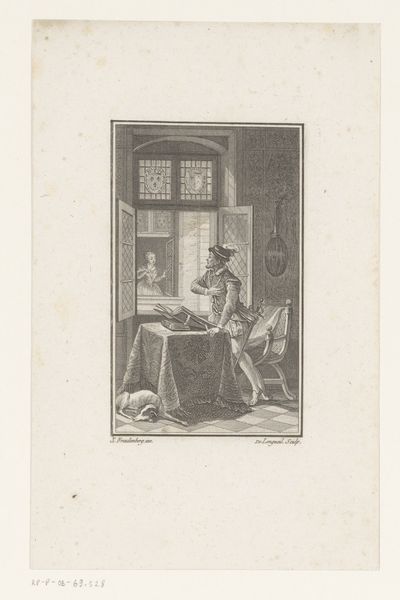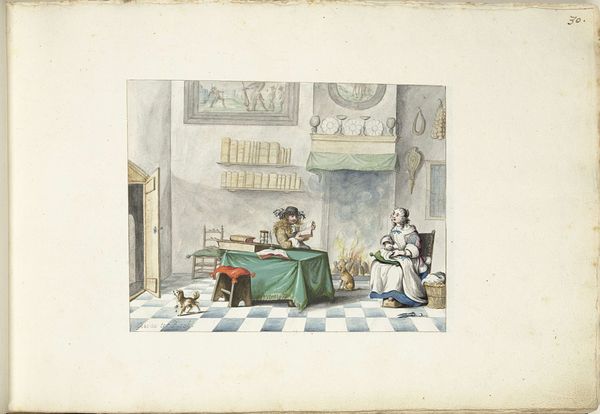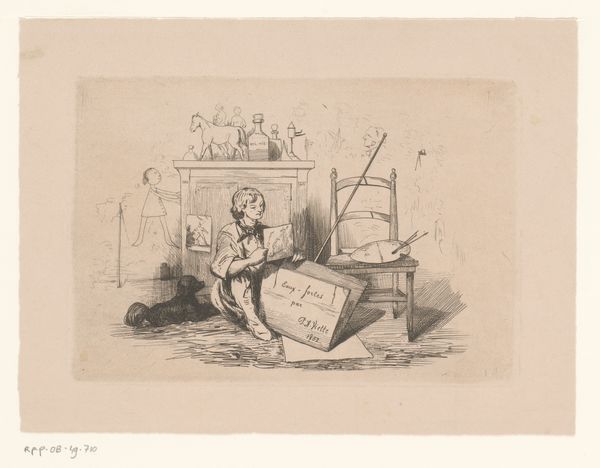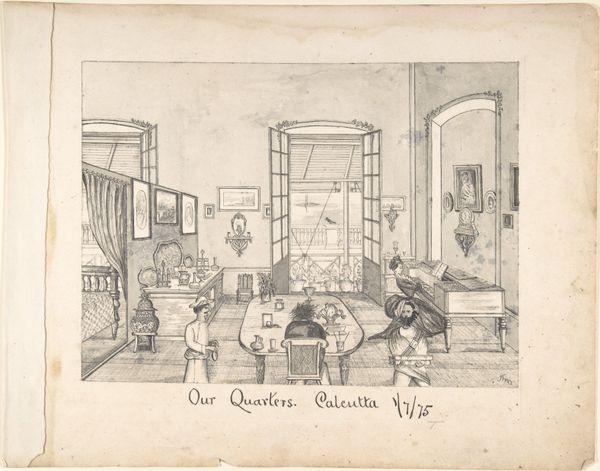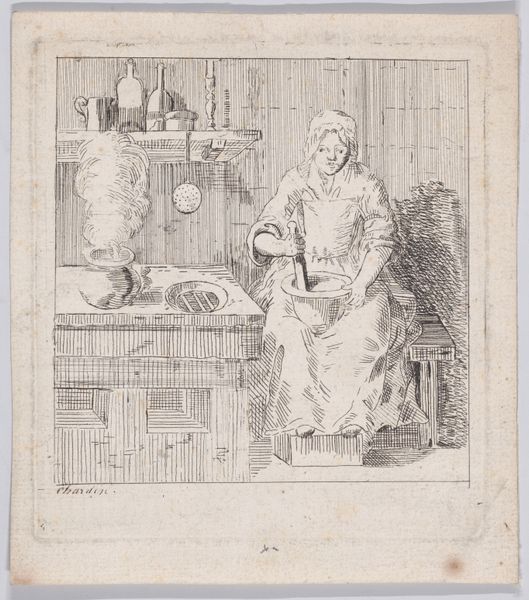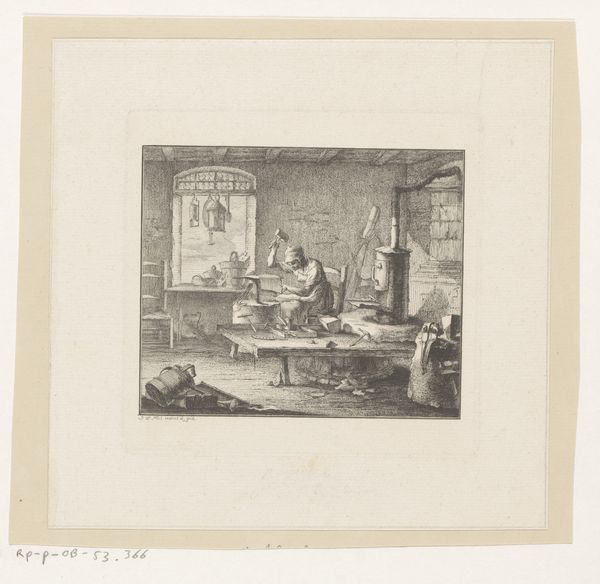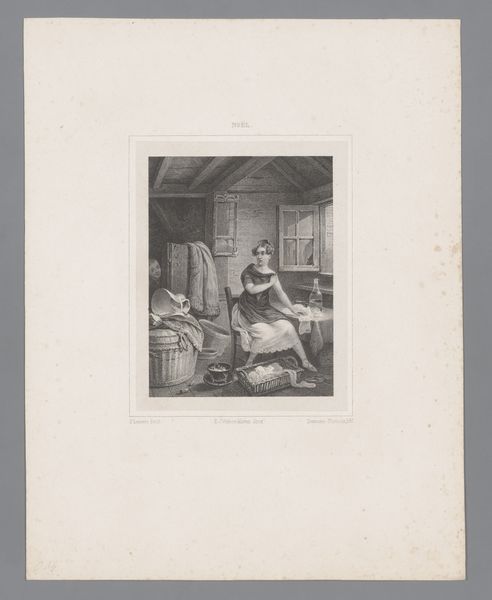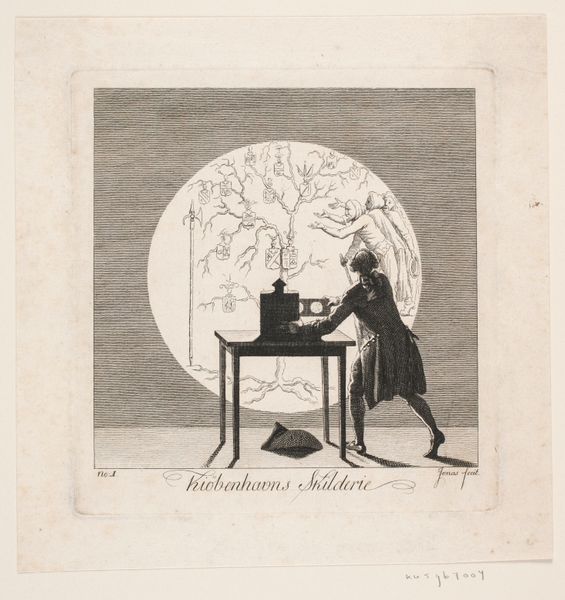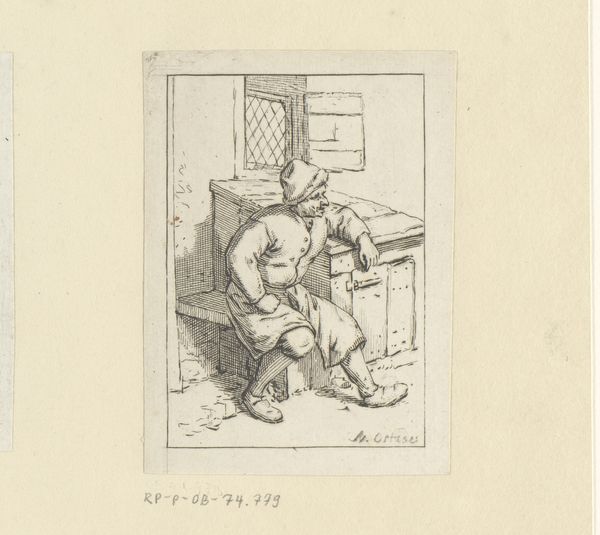
drawing, watercolor
#
drawing
#
watercolor
#
genre-painting
#
watercolor
Dimensions: height 184 mm, width 252 mm
Copyright: Rijks Museum: Open Domain
Curator: Let's turn our attention to this intriguing watercolor drawing, "Man met dikke buik aan een gedekte tafel," dating from the late 18th century and held at the Rijksmuseum. The artist is, alas, anonymous. What are your initial thoughts? Editor: Well, immediately, there’s a feeling of overindulgence, of almost grotesque self-satisfaction radiating from the bloated figure at the laden table. The almost pastel hues soften what is otherwise quite a pointed critique. Curator: Indeed. The corpulent figure is the clear focal point, isn’t he? But consider the historical context. This work emerged in an era of extreme social stratification. Editor: Absolutely. This could be interpreted as a satire of the excesses of the wealthy elite while so many suffered. That grotesque stomach becomes a symbol of societal imbalance. Curator: Precisely. The menu board in the background lists daily dishes which suggest the rigid eating schedules that served the aristocracy, an excess enabled through a hierarchical society. Look at the wilting plumes, and overflowing courses of the covered table; they offer an allegorical reading on social overabundance. Editor: And the table’s contents themselves… those bottles of wine and multiple courses seem positioned as accessories that signal the privilege that separates him from the starving masses. But is he simply indulging in a personal moment of excess, or performing wealth for an audience? I also wonder, looking at this, what would people today make of such visual consumption as art? Curator: A valid question. We view this image, knowing that, during its creation, the vast majority of people lived in stark contrast to the world this man embodies. Satirical drawings such as these were used to convey information during revolutionary eras. Editor: Looking at it from a modern lens, it's easy to see reflections of contemporary issues with over-consumption, wealth distribution and body politics. It offers potent and continuous themes which still encourage important conversation centuries later. Curator: A pertinent insight, this piece leaves one contemplating privilege, the performative aspect of wealth, and ultimately, social responsibilities. It seems it has successfully immortalized complex cultural issues from centuries ago that still impact society today.
Comments
No comments
Be the first to comment and join the conversation on the ultimate creative platform.
